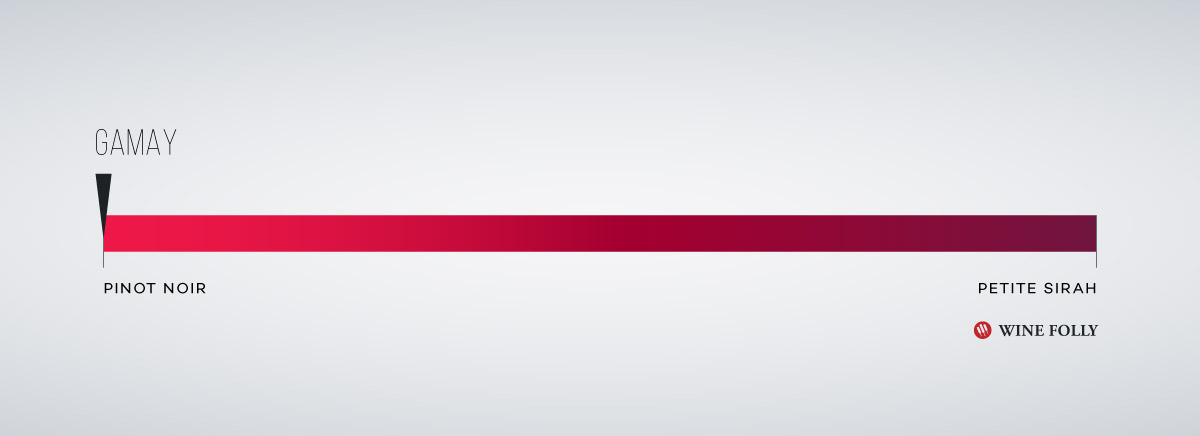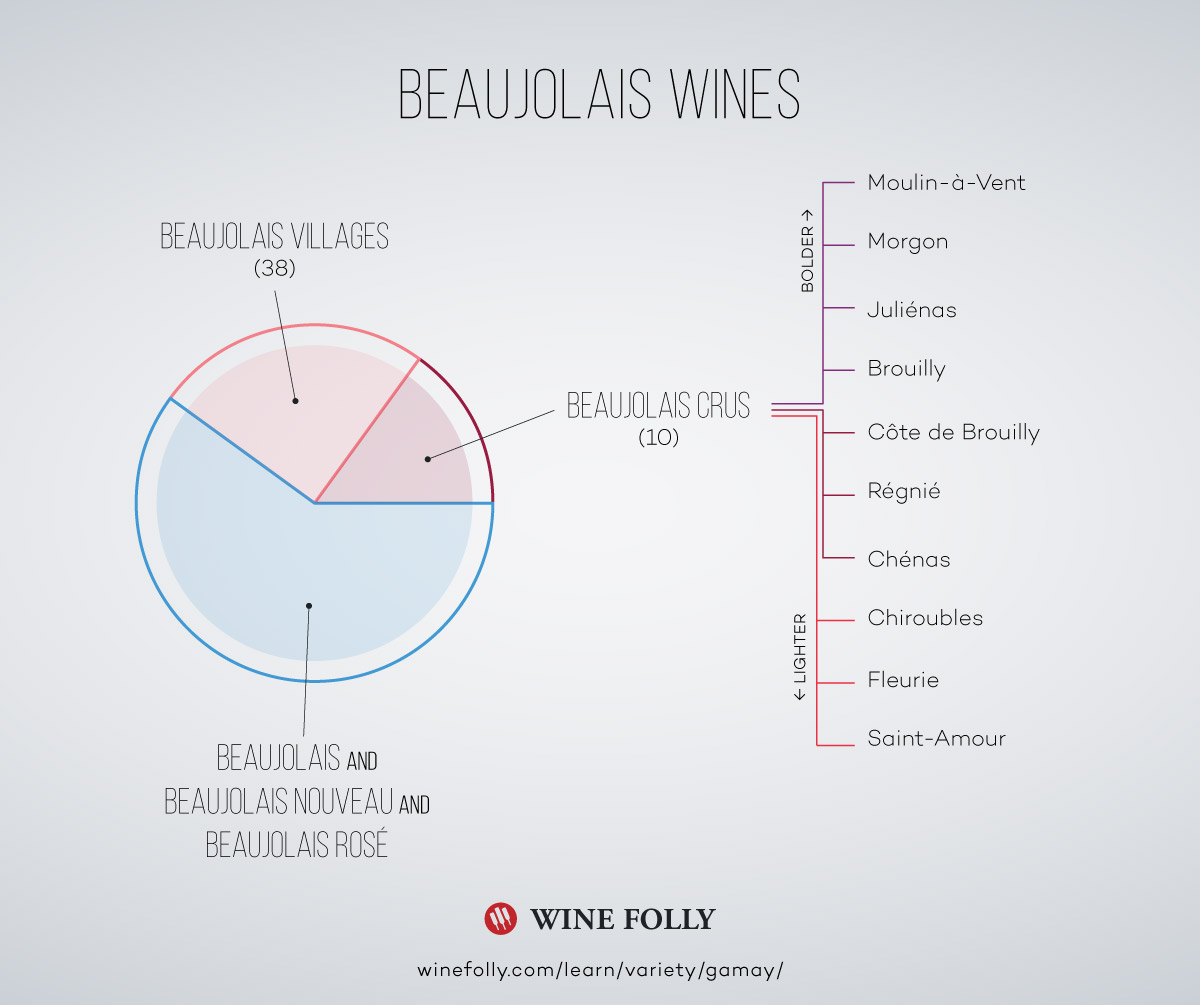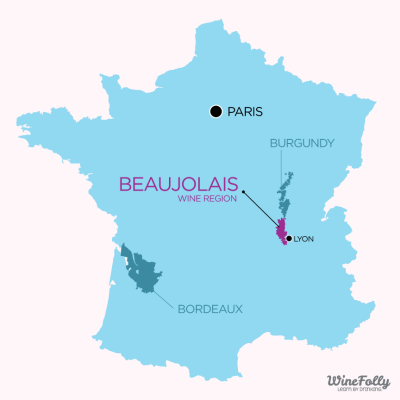If you’re one of the few who actually stops to smell the neighbor’s flowers, or breathes in deeply when you’re in a forested area then you are the ideal drinking candidate for Gamay. Also, you do realize you’re a rarity, don’t you?
Gamay (“Gam-may” aka Gamay Noir) is a light-bodied red wine that’s similar in taste to Pinot Noir. In fact, this variety is a cousin of Pinot Noir and it grows primarily next to Burgundy, France (Pinot motherland) in a region called Beaujolais. Gamay wines are loved for their delicate floral aromas, subtle earthy notes, and surprising ability to pair with food (even fish!). The best part is, you can find high quality Gamay at a much better price than Pinot Noir.
If you want to try Gamay, there are a few things to know and expect from this wine. Gamay has been steadily growing in popularity in cool-climate regions such as France, Canada, Switzerland, Oregon and New Zealand.
Taster’s Guide to Gamay Wine
Gamay is one of those wines where a large part of the fruit character in the wine is derived from the aromas (and not as much in the taste). It’s a wine that is best served in a large globe-shaped Burgundy glass to collect all the stunning fruity and flowery aromas. Expect to smell fresh cut violets, iris and peony flowers wrapped in cherry, raspberry and plum with subtle background notes of potting soil. On the palate, the wines are light with high acidity and tart flavors of red fruits along with a subtle bitter note on the finish. You’ll find that French Gamay labeled as Beaujolais, is a degree or two more earthy in taste than Gamay from Canada or New Zealand.
Similar tasting wines: Pinot Noir, St. Laurent, Schiava, Zweigelt
Cost for quality: $15–25 for an outstanding bottle of Gamay
Food Pairing with Gamay
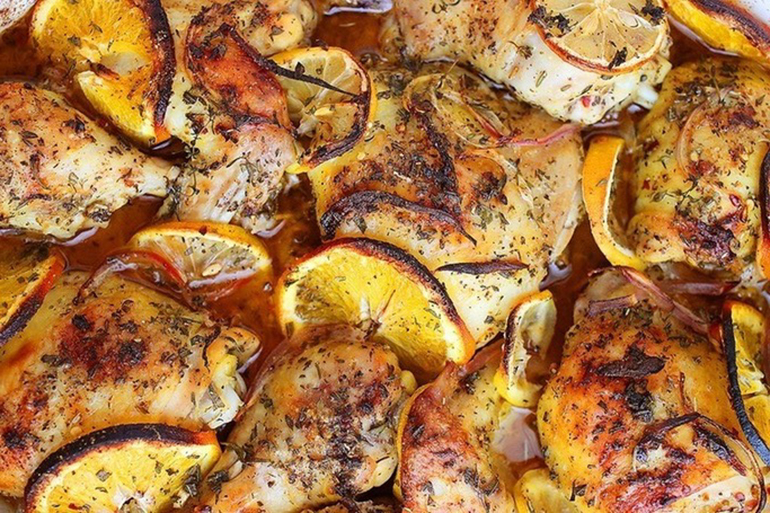
Herb and citrus roasted chicken is an ideal match for Gamay. by Carlos Newsome
The amazing thing about Gamay is that because of the high natural acidity paired with low tannin, the wine pairs shockingly well with a very wide array of foods. Basically, it’s hard to go wrong with Gamay and food.
Examples
- Meat
- Roast Chicken with Herbs de Provence, Chicken Tangine with Apricots and Olives, Chicken dumplings, Chicken Liver Paté, Duck with Plum sauce, Turkey with Chestnut stuffing, Beef Stroganoff, Pork Sausages, Hangar steak with Chimichuri, Spicy Tuna Roll, Planked Salmon with Soy Glaze, Grilled Salmon with Dijon Glaze, Roasted Black Cod with Lentils and Pork Belly, Fried Calamari, Cajun Shrimp and Grits
- Cheese
- Neuchatel, Chèvre, Comté, Brie, Mimolette, Saint-Nectare, Swiss Raclette, Brie with Pomegranate sauce, Cream Cheese, Farmer’s Cheese, Swiss, Gruyere, Monterey Jack
- Herb/Spice
- Fennel, Anise, Green Cardamom, Mustard, Horseradish, Caraway, Garlic, Shallot, Chive, Leek, Marjoram, Bay Leaf, Dill, Lavender, Sage, Mint, Chervil, Pink Peppercorn, Clove, Nutmeg, Allspice, Cinnamon
- Vegetable
- Spanakopita, Black Olive Tapenade, Roasted Potatoes with Dill, Onion Rings, Roasted Eggplant, Portabello Mushroom, Sunchoke, Spinach Salad with Beets, Red Quinoa, Capers, Apricot, Dried Cranberry, Cranberry Sauce, Walnuts, Pecans, Butternut Squash, Delicata Squash, Acorn Squash
Beaujolais Wine
One cannot talk about Gamay without mentioning Beaujolais, France which produces 75% of the world’s Gamay wine. The thing about Beaujolais is that a large chunk of the production goes to basic quality wines labeled simply “Beaujolais” or “Beaujolais Nouveau.” Then, the quality increases with the village and cru level wines. These wines can age, and often will have a similar taste character to red Burgundy. Shockingly, because these 2 quality levels of Beaujolais are so under valued, you can find village and cru Beaujolais for just a couple of bucks more than the basic regional option. To make things simple to understand, here is a great little infographic to show you the classifications and names to look for:
The 10 Crus of Beaujolais
- Brouilly: Bold raspberry, ripe peach and a touch of soil
- Chénas: Medium-Bold aromas of rose and peony and spicy woodsy notes with age
- Chiroubles: Elegant aromas of violets, peony, red currant and cherry
- Côte de Brouilly: Medium-Bold aromas of iris, plum and fresh grapes
- Fleurie: Elegant aromas of black currant, peach, iris and violets
- Juliénas: Bold aromas of strawberry, violets, cinnamon, and red currant
- Morgon: Bold aromas of cherry, peach, plum and violets
- Moulin-à-Vent: Bold aromas of cherry, violets and black currant
- Régnié: Medium-Bold aromas of raspberry and black currant with a hint of spiciness
- Saint-Amour: Elegant aromas of red currant, iris and plum
Read more about the Beaujolais region including a list of the 38 village names and details on each of the Cru’s –
Beaujolais Wine Region
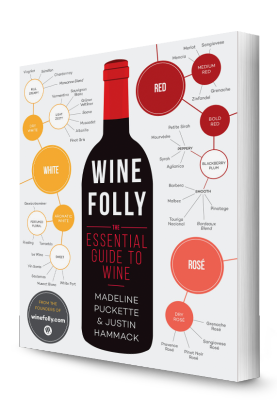
Get the Wine Folly book
A visual guide to wine with 230+ pages of infographics, data visualization and wine maps that simplifies the world of wine. Wine Folly: The Essential Guide to Wine is the perfect companion for exploring and becoming confident with wine.


